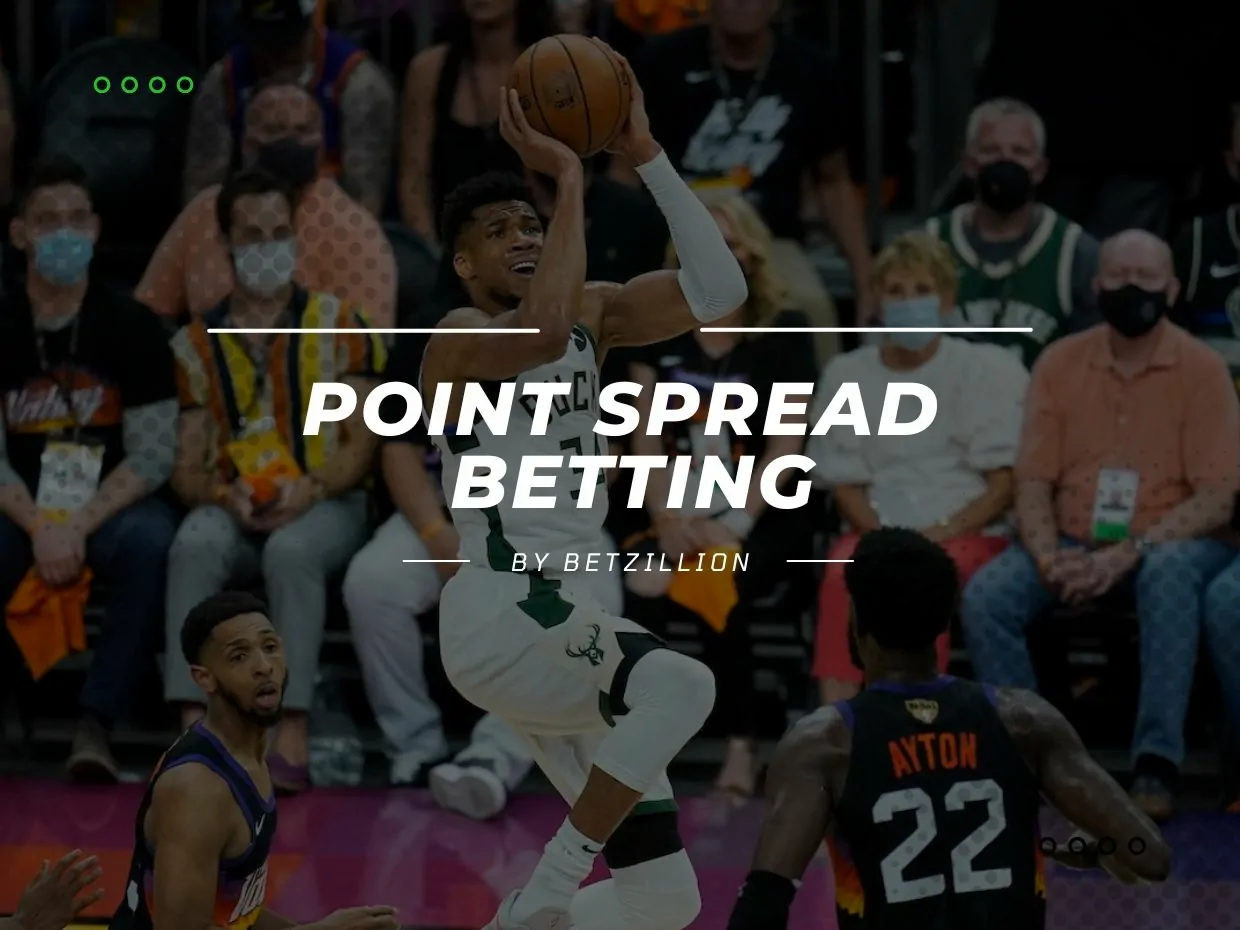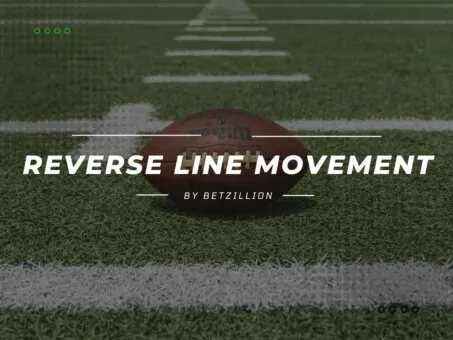This website uses cookies so that we can provide you with the best user experience possible. Cookie information is stored in your browser and performs functions such as recognising you when you return to our website and helping our team to understand which sections of the website you find most interesting and useful.
Point Spread Betting Explained

Spread betting is one of the most popular betting markets in basketball, football, hockey, and baseball. It is popular in the USA and frequently seen in international sports tournaments, such as the NHL, NFL, and NBA.
A match-winner bet on the Orlando Magic doesn’t make much sense since the odds are low. So, odds are designed to level up the competition to an extent, so backing the underdogs still has a chance to win. With a point spread, bookies give much better odds.
The strong team must cover the point spread the sportsbook offers or win by a higher specified margin. The underdog can lose within the spread to still be a winning bet for you.
How Do I Make a Spread Bet?
The bookmaker sets the point spreads, and you choose your bets depending on whether you believe a team will perform better or worse than the spread suggests. Here’s a step-by-step guide to placing spread bets:
- Create an account or log in to your preferred sportsbook.
- After depositing funds into your account, choose a sport.
- Examine the spread betting markets and determine which team you want to wager on.
- Decide on your stake amount.
- Proceed to place your bet.
How to Read a Point Spread?
To read a point spread, you must know that the – sign indicates the favorite team, while the + is for the underdog.
Using the example above, here is how the spread looks and the situations where you will win:
- Los Angeles Lakers: -4.5 (bettors win if Lakers win by four or more points)
- Orlando Magic: +4.5 (Orlando Magic either wins or loses by 1-4 points for punters favoring Orlando)
The Lakers, represented by -4.5, are the strong team, while the Orlando Magic is an underdog with the +4.5 spread.
If you’re new to it, online sports betting websites might have a guide on how to place your first point spread bet. Spread betting is exciting because you can win even if your team loses.
Point Spread Odds
The odds for point spreads are usually represented in American odds format. The point spreads usually have -110 odds on each side.
For example, the odds of -110 show you will have to spend $110 to have a profit of $100 on your win. The $10 is the profit or the ‘juice’ to the bookmaker, also called the ‘Vig’ or ‘Vigorish.’
What Does PK or Pick’Em Mean in the Point Spread?
Pick’em, or PK, indicates that both teams are evenly matched in terms of skill and form. The point spread is 0, in which no team is favored. It is essentially a moneyline bet, and the winner directly determines the fate of your stake.
Point Spread in the NBA
The point spread is one of the biggest markets in the NBA, the professional basketball league in North America. You can commonly find many NBA sportsbooks featuring point spread markets.
Continuing from our example above, let’s say the Lakers win 27-24 or a difference of 3, less than 4.5. The gamblers on the Orlando side will win. If the Lakers win 30-20, a difference of 10 or more than 4.5, those who are backing the Lakers’ win would win.
Point Spread in the NFL
The top way to bet on American football is through the National Football League.
The numbers and odds are represented the same way as in the NBA point spread markets, except the spread figures are for the number of goals and not the points.
Point Spread in the NHL
The point spreads in the NHL represent the goals like the NFL. It also uses American odds, but the payout values might differ, explained as follows:
For example, the point odds of two teams in the NHL look like this:
- Canadiens -130
- Rangers +120
The Canadiens’ odds are -130, and the Rangers’ wins are fixed at a payout of +120. The Canadiens, being the favorites, are more likely to win, so you will have to spend $130 to win $100. If the Rangers win, which is unlikely, a $100 stake will return $120.
What Is a Puck Line or Run Line? How to Bet Against the Point Spread?
A Point Spread value is called a Puck Line in hockey leagues such as the NHL (National Hockey League) and a Run Line in baseball matches like the MLB (Major League Baseball).
Positive and negative values indicate the spreads, and everything else works in the same way.
Backing the favorite to win or a strong team is ‘betting with the spread,’ and you win as long as they win above the established point spread value.
Betting on the underdogs to win is ‘betting against the spread,’ and you win back your stake if they win or lose within the established points spread value.
What Does Covering the Spread Mean?
Covering the spread means the team successfully beat the set spreads from the sportsbook. That could be winning by staying within the specified limit. For instance, if the bookie’s fixed spread is +7 for Team A, and Team A loses against Team B by less than 7 points, then Team A has covered the spread. Likewise, if Team B wins by 8 points, they have covered the spread.
How Is a Point Spread Value Determined by the Bookmaker?
The odds set by bookmakers are determined by staking volume and a few other factors. With the point spread market, the outcome also depends on the point spread values other than the set odds. You must know how the spreads are determined to have a good chance of winning point spread bets.
With the points spread, online sports betting sites even the balance, but there are several factors at play. To determine ideal point spreads, bookies look at a range of factors, including:
- The power rankings for both teams
- The location of the match
- Public perception of the strength of both teams
- Injuries, weather, and other factors that impact the game
They also adjust the point spread depending on the betting stats before the match. If punters appear interested, they adhere to the same values. Conversely, if there is less action on the set point spreads, the bookie will adjust the values.
How Exactly Are Point Spreads Calculated?
Bookmakers rely on several factors when calculating point spreads, but how are they calculated? Let’s look at the steps taken to calculate point spreads.
It begins with an in-depth analysis of the team participating in a match. Bookies develop mathematically driven statistics about a certain team and its players before the match/season begins. They tweak their values as the season progresses.
So, when it comes to a scheduled game, the sportsbook will factor in home-field advantage, player injuries, team scores, weather, players at rest, and team power rankings to determine the point spread odds before the match.
Notably, not all bookmakers calculate their odds. Instead, they copy the movement of top books on the market.
Let’s say that the Bucks, an NBA title contender, plays the Magic, which are an underdog. With Giannis Antetokounmpo in the team, the Bucks are the obvious favorite, probably with a moneyline of -800 or close. Those odds are not exactly perfect for bettors, so that the bookie might give them a -110 moneyline at -13.
Conversely, the Magic will be -110 with a moneyline of +13. If the Bucks win by 13 points, you win your bet. The Magic can afford to lose by up to 13 points in this case or win the match for your wager to win.
Sometimes, you’ll see spreads with .5. Let’s take a match between the Cowboys and the Giants, for example. The Dallas Cowboys may be a -3.5 favorite at -110, which means they need to win by 3 points or more for your bet to win.
The Giants are an underdog at the same odds with a spread of +3.5, so to cover the spread, they must not trail by over 2 points at the end.
The Best Point Spread Bookmakers
Now that you know how spreads work, it’s time to find a reputable sportsbook providing point spread sports markets. We’ve thoroughly assessed every bookie that offers point spread betting, and here are our top picks:
Bovada
As our top choice for spread betting, Bovada offers point spread odds for 30+ sports. For example, if you want to wager on spreads in basketball, the bookie will provide 10+ markets.
BetOnline
Another top option is BetOnline. It offers a wide range of spread betting markets, guarantees fast and secure payouts, and is quite convenient for Bitcoin users.
MyBookie
If you enjoy parlays just as much as spreads betting, you’ll love MyBookie. You can easily utilize point spread markets to make a parlay. The oddsmaker provides valuable tips to make your gamble worthwhile. The platform is also easy to use and features live markets for point spread betting.
Intertops
We loved Intertops sportsbook because it offers competitive odds on NFL games. The game selection is massive, and the interface is easy to use.
XBet
Looking for generous odds boosts for your spread bets- XBet is an ideal fit. Whether you want to wager pre-game or in-game, the bookie provides good odds and bonuses for a better deal. The sportsbook also offers spread betting on quarter or half-game results. For instance, in an NFL game between the Seattle Seahawks and the Green Bay Packers, you can stake on the favorites – Packers – to win the first half of the match with a point spread of over -2.5, or more than 2 goals.
Main Features of a Point Spread Betting
As you may already know, point spread betting revolves around three main things, which we’ll refer to as its main features. They include:
- Spread: This refers to the difference in points between the winning and losing team at the end of the game. Bookmakers determine the spread in advance, and it’s up to the player to decide which participating team will win or lose by the set points. To place spread bets, you must know how to read point spreads.
- Underdog: That’s the team that’s likely to lose in a specific match. It’s usually the less popular team in a game and has a plus (+) sign before its point spread odds.
- Favourite: A favourite team is one that the bookie predicts to win a particular match. Such a prediction is usually based on factors like the team’s popularity among bettors, power rankings, home-field advantage, and injuries.
Why Does a Point Spread Change?
There are many reasons why a bookmaker may change a point spread. It could be injuries to the team lineup on game day, total stake volume, or ‘sharp’ money.
Sharp or ‘respected’ money is bets made by professional bettors. The sportsbook reserves the right to change point spread odds. As a result, it’s best to keep an eye on such spread movements to ensure you stay up to date.
Can I Use a Point Spread Bet in a Parlay?
Generally, a parlay or accumulator combines different types of bets, such as point spreads, money line, totals, and so on.
Given the massive potential payout of point spreads, combining multiple spread bets in a parlay bet boosts your payout potential. Don’t overlook analyzing each of your selections to increase your winning odds. Remember, all your events in a parlay bet must be correct to win.
Live Betting With Point Spreads
You can also place live spread bets. Most major sports tournaments and leagues, like the NFL, NBA, MLB, and English Premier League, allow live point spread betting. Just like other live markets, the odds of point spreads change often to reflect the game’s current action.
Despite the fast action, you must find the best time to place your wager for the best possible result. We recommend BetOnline for the best live spread markets across its 30+ sports.
Why Is a Point Spread Bet Cancelled?
Usually, when a point spread bet is canceled, the particular game may have been canceled or not completed within the expected time. When a bookmaker cancels a point spread, they’ll refund the stake amount to the player’s account, allowing you to place another bet with that money.
What Do ‘Long’ and ‘Short’ Mean in Spread Betting?
Here is what the two terms mean:
Going Long
- Backing a team or outcome with a lot of upside, typically favoring an underdog with a higher point spread.
Example: Being long on the Jets +10” means you’re betting they’ll outperform expectations (lose by fewer than 10 points or win).
Going Short
- Being against a team or expecting underperformance, often backing a favorite not to cover the spread.
Example: Being short on the Chiefs -10” may mean you’re betting they won’t cover the 10-point spread.
What Is Leverage in Spread Betting?
Leverage means you have to make a smaller deposit to take a position than the amount required to stake and get a wider exposure. Remember that leverage doesn’t directly impact your losses or profits since the overall result depends on the value of the entire trade.
What Is the Margin in Spread Betting?
There are two margins in point spread betting. The one we’ve discussed above is the deposit margin, and the other is the maintenance margin. Deposit margin refers to the amount you put down to create a position. The maintenance margin is the additional deposits you must make if your position starts making losses.
Spreads vs Moneyline
Besides spreads, moneyline markets are popular among sports bettors worldwide.
Moneyline outrightly predicts the winner of the match and does not leave any scope to win if one team is an underdog and is more likely to lose.
When it comes to spread betting, the focus is on the spread margin set by the bookmaker, and if the margin is low, you have the chance to win even when in favor of the underdog. Also, the predicted winner must outperform the underdog massively, more than the point spread value, to win your gamble.
The table below outlines these differences:
| Spreads | Moneyline |
|---|---|
| Harder to win because punters must speculate which team will cover the spread | Easier to pick since you outrightly choose the winner of the game |
| More generous payouts | Payouts are lower compared to those from spread betting |
| Odds are usually the standard -110 | Moneyline odds are generally more extreme, e.g., -1000 or +10000. These odds are often displayed as a win percentage. |
Point Spread Betting Pros & Cons
| PROS | CONS |
|---|---|
|
PROS
|
CONS
|
Should I Bet With Point Spreads?
Point spread betting is an exciting way to stake on sports. However, you must understand how it works to make substantial profits. To get the most out of point spread bets, find a game with two teams with almost the same power ranking but one with a higher chance of winning based on match location, player form, injuries, etc. Ensure you’ve researched these aspects before placing your spread bet.
Frequently Asked Questions
-
What does point spread mean in sports betting?Point spreads are offered in sports matches with a massive difference in either team’s competence. The bookie levels the field by handicapping the stronger opponent.
-
What is a -2.5 point spread?A -2.5-point spread means that for you to win, the favorite team must win the match by more than 2.5 points. If it wins by 2 points, you still lose.
-
What does a +6.5 point spread mean?Like the 2.5-point spread, a +6.5 spread means that the underdog team can lose by 6 or fewer points, and you can still win.
-
How is a point spread calculated?Point spreads are calculated differently, considering various factors, such as team ranking, player injuries, home advantage, and the current form of both teams.
-
How to make money using spread betting?To make money with spread betting, you must know how it works and use strategies. The best bookies will have this information in their blog section.
-
Is spread betting taxable?Spread betting is non-taxable, as the law classifies it as gambling rather than an investment.
-
Are Point Spreads Offered For Half or a Quarter of the Match?Yes, many sportsbooks release point spreads on quarters or halves simply because there’s a lot of action on these odds. Many of these are live markets.
-
Still have questions?
Ask our experts
Related articles
Reverse Line Movement
Futures Betting







